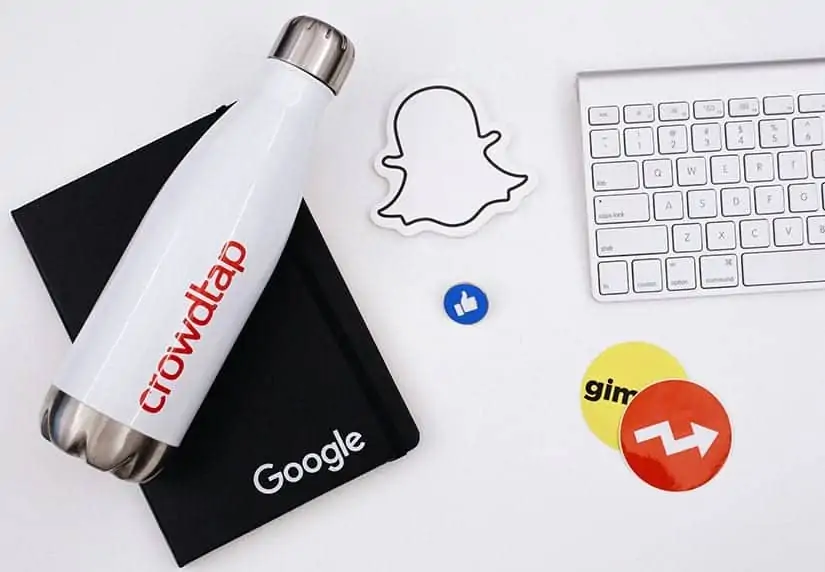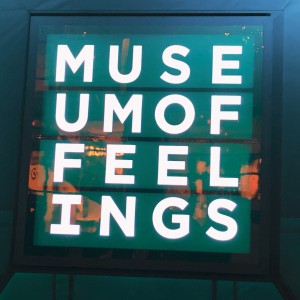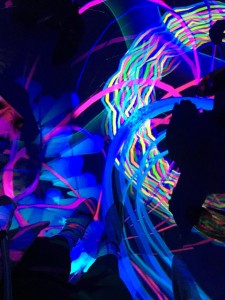
What the Museum of Feelings Got Right About Experiential Marketing
 If you live within 100 miles of New York City and went on Facebook in the past month, chances are you heard about the Museum of Feelings, a free, temporary exhibition in Lower Manhattan that promised to “turn emotions into art.” But as anyone who visited the exhibit soon found out, the MoF was not really a museum at all, but rather a brilliant example of experiential marketing that effectively harnessed the power of social media.
If you live within 100 miles of New York City and went on Facebook in the past month, chances are you heard about the Museum of Feelings, a free, temporary exhibition in Lower Manhattan that promised to “turn emotions into art.” But as anyone who visited the exhibit soon found out, the MoF was not really a museum at all, but rather a brilliant example of experiential marketing that effectively harnessed the power of social media.
When I first heard about the Museum of Feelings, I figured it was a trendy art installation put on by some New York cool kids. Everything I had seen about it on social media had supported that theory and made me want to go experience it for myself. Upon my arrival, the line was about two hours long and growing. Clearly, everyone had drunk the Kool-Aid. People were huddling to get warm as they waited to experience this mystical museum. The question on my mind was, “who dun it?” Who had succeeded in creating this temporary social media phenomenon that instigated immense amounts of FOMO (Fear of Missing Out) which then prompted people to spend their Saturday and Sunday mornings (if not skip out on weekday obligations) waiting in a line, outside, in winter, for hours?
The answer: a brand we all know very well, Glade. So what does a fragrance company have to do with feelings? Well, a lot, actually. The whole concept of the MoF was to provide consumers with an experience that activated each of their senses, but focused on one in particular: smell. Each installation focused on generating a unique, positive emotion and pairing it with a scent, which the visitor only learned at the end was a Glade fragrance. From a “feel invigorated” zone to a “feel calm” area, the product became a large part of the consumer’s experience and helped guide them throughout the exhibit. Consumers were left feeling all the #positivevibes, but remained unaware of the brand behind them until the completion of their journey through the MoF.
This branding technique, referred to as experiential marketing, is nothing new, but has significantly increased in popularity over the past few years, with the Event Marketing Institute reporting that brands are estimated to have increased event and experiential budgets by more than 6% in 2015. Why the growth? In today’s multichannel world, there exist endless outlets by which consumers can be reached, but at the same time, there exist more methods to avoid ads and a subsequent lower tolerance level for bad advertising. With its mega focus on consumers, experiential marketing goes beyond typical ad consumption methods by creating incredibly engaging and notable experiences. This allows for brands to establish more authentic relationships with their consumers by involving them in the creation of content in real time. The hope is that these experiences spark conversation as well as inspire real-time content creation that can then be shared on social media.
 From Coke, with its “Open Happiness” vending machines, to Zappos, with its #TravelHappy airport baggage carousel of prizes, a number of major brands have hopped aboard the experiential train over the past few years. So what made Glade’s effort stand out, and what marketing lessons can we take away from the Museum of Feelings?
From Coke, with its “Open Happiness” vending machines, to Zappos, with its #TravelHappy airport baggage carousel of prizes, a number of major brands have hopped aboard the experiential train over the past few years. So what made Glade’s effort stand out, and what marketing lessons can we take away from the Museum of Feelings?
1. Create FOMO
FOMO, as I mentioned earlier, is one of the most important sentiments to understand when exploring the topic of experiential advertising, as it drives individuals to engage in order to avoid their perpetual fear of missing out. In the case of the MoF, whether you loved it or hated it, the reality is that you’re going to talk to your friends about how you stood in line for hours and what you stood in line for. Start building excitement for your effort before it launches, and let word of mouth take its natural course from there.
2. Do It for the Instagram
Make your experience visually worthy. In other words, you want your consumers to “do it for the Instagram.” At the MoF, the visuals were so strong that consumers were excited about sharing their experience across Facebook, Twitter, Instagram and other channels. Which brings me to my next point…
3. Enhance and Elevate With Social
Experiential marketing cannot succeed without supplementary social media execution. Indeed, social media was at the forefront of the MoF and ultimately fueled the experience. Social media data that poured in from museum audiences affected the look and feel of the museum on the exterior so as to present “New York’s ever-changing mood in vivid color.” Moreover, social media was essential to spreading brand awareness and ensuring a follow-up with the consumer. This social component also allowed for the brand to track its success, at least in terms of spreading brand awareness. And, of course, social media helped the MoF build FOMO before and after its launch.
Make sure to give your consumers a way to interact with your experience and brand on social, including creating a hashtag and check-in location so that they have a central hub in which to share their experiences. Social then provides something tangible for consumers to revisit after the experience is over.
4. Set Time Constraints
Making your experience a limited-time only offer creates a sense of urgency for people to partake in it, and also helps create – you got it – that sense of FOMO we keep going back to.
5. Evoke Positive Emotion
Appeal to consumer emotions and leave them feeling good about their experience. The MoF, for example, was able to blend a variety of marketing tools in a creative and engaging way that made consumers feel like they were part of a unique experience that they chose to take part in. All of the installations inside the museum were created to be reactive to human touch and presence, with the look of the museum changing inside and out depending on the “mood” of its visitors.
Consumers don’t want to feel like they’re being marketed to. Take some time to think about what your brand means to people. Now use that sentiment to create a visually compelling, social-media ready FOMO-inducing experience, and you’ll be on your way to eliciting consumer feels, too.
Back to Posts